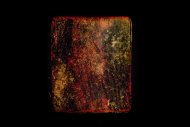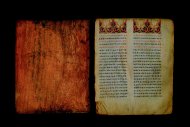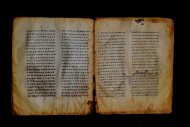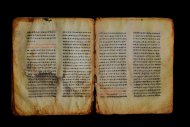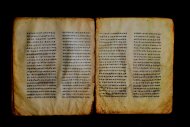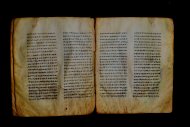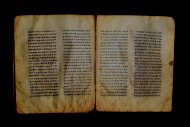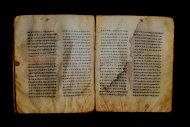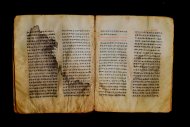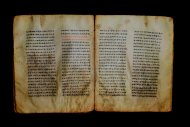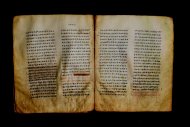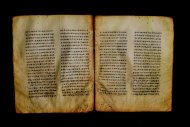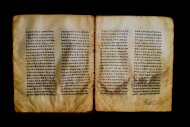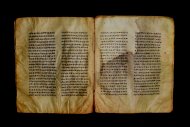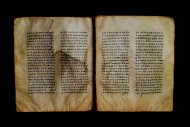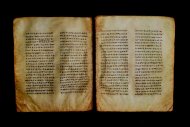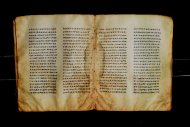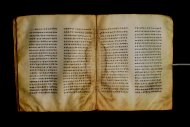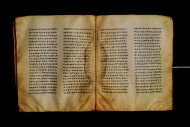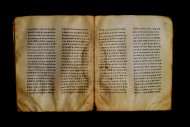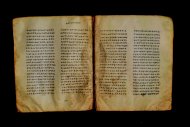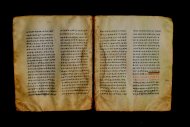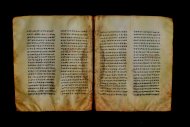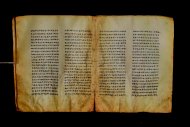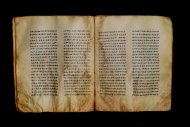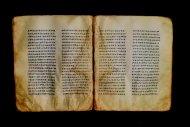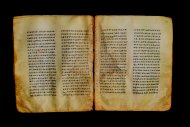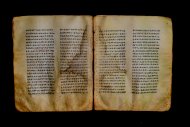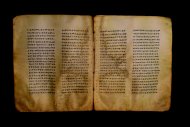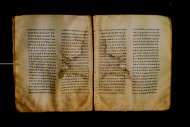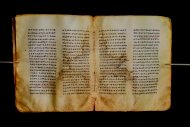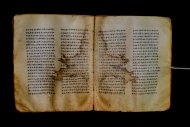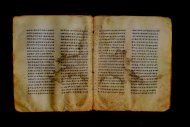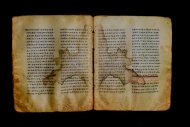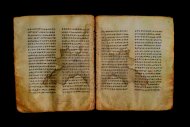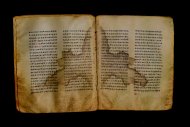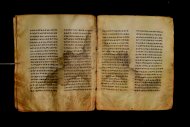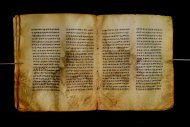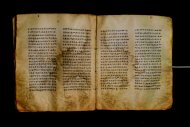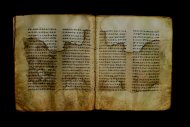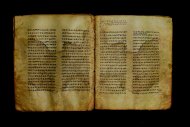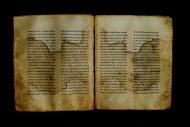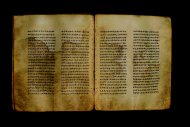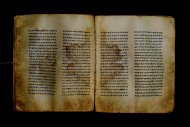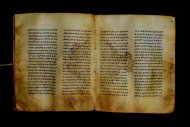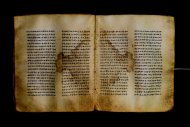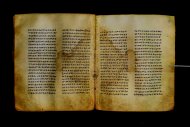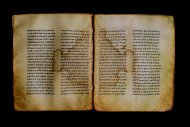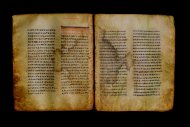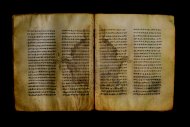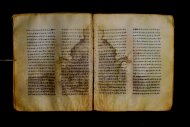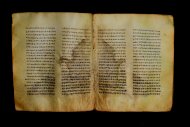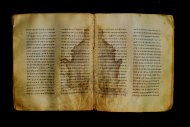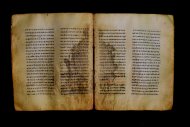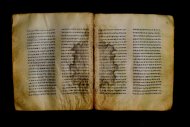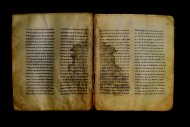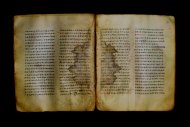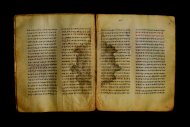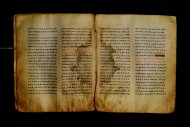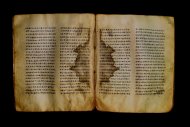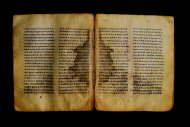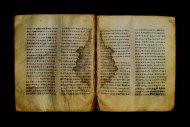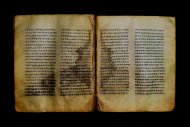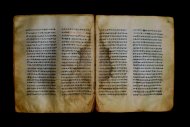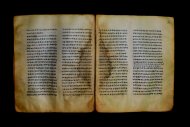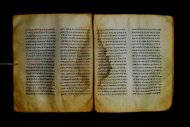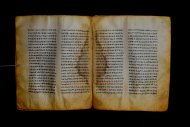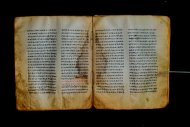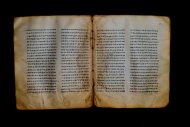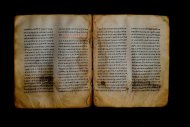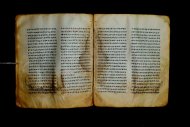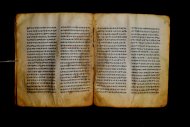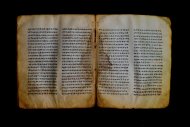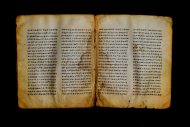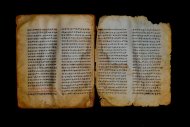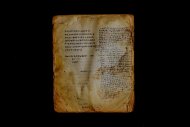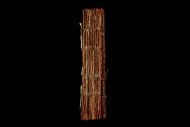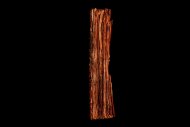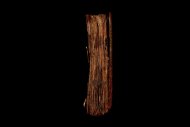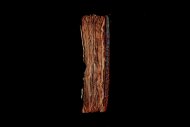|
Shelfmark |
3839 (olim Mordini 192) |
|
Owning institution |
Biblioteca Palatina, Parma |
|
Typology |
Codex |
|
Copying date |
16th–17 century, dated on a paleographical basis. |
|
Title |
Wǝddase Amlak (“Praise of God”) |
|
Subject |
Prayers |
|
Language |
Gǝʿǝz |
|
Short description of the content |
Ff. 1ra–118rb: Wǝddase Amlak (“Praise of God”), divided into readings for each weekday Incipit: በስመ፡ አብ፡ … ንወጥን፡ በረድኤተ፡ እግዚአብሔር፡ ወሠናይ፡ ስንአሁ፡ በጽሒፈ፡ ጸሎታት፡ እንተ፡ ዘሰብዓቱ፡ ዕለታት፡ በሰላመ፡ እግዚአብሔር፡ አሜን።
|
|
Writing material |
Sheep parchment |
|
Outer size (included the binding) |
235 x 193 x 47 mm |
|
Outer size of the textblock |
232 x 192 x 38 mm |
|
Number of folia |
92 |
|
Blank folia |
– |
|
Binding |
Originally two wooden boards (the back board is missing). The spine is uncovered. Four sewing stations. |
|
Sewing |
Two Z-twisted threads (each thread is S-twisted). |
|
Sewing pattern |
– |
|
Slip case |
– |
|
Quires |
12 |
|
Quire marks |
– |
|
Layout |
2 columns. |
|
Number of lines per column |
23 |
|
Ruling |
Blind ruling, from inside to outside. Lines are written above the ruling. |
|
Ruling pattern |
Nosnitsin 1 |
|
Scribe |
Unknown |
|
Colophon |
– |
|
Additional notes |
1. F. 92va: purchase note almost completely illegible due to erasure. Only the words ዝውዳሴ፡ አምላክ፡ ዘአጥ[...]ዎ፡ በ[…] አነ፡ […] ወልድ፡ […] ወልድ። ። (“this [book] of the ‘Praise of God’ that I purchased for … I …”) are legible. 2. F. 92vb: hymn to Jesus Christ, added in a hand contemporary to that of the main text, yet less accurate. Incipit: ሰላም፡ ለከ፡ መዐዛ፡ ስሂን፡ ወፍቅር፡ ጸዋሬ፡ ስገከ፡ (!) ኄር፡ በዕለተ፡ ዐርብ፡ አዜ፡ ቀትር፡ መስቀል፡ መግረሬ፡ ፀር፡. The text is partially illegible due to effaced ink. |
|
Decoration |
F. 1r: polychrome ornamental band (ḥaräg) divided into two symmetrical sections, each placed above each column and both decorated with floral motifs. Other polychrome ornamental bands, decorated with geometrical patters, are also next to the explicits of several readings (ff. 11vb, 30rb, 60vb, 72vb, 73rb, 81vb). Some of these decorations are incomplete or sketched (ff. 12rb, 49rb). |
|
State of preservation of the binding |
Defective. |
|
State of preservation of the textblock |
Mediocre. |
|
Provenance and history |
The manuscript belonged to a certain Täsfa Qǝddusan, whose name has been added in all supplication formulas throughout. The name of a woman named Ṣäbälä Maryam has also been occasionally added in some supplication formulas. The book is mentioned by Antonio Mordini in the inventory list of the books of the monastic collection of Gundä Gunde (Mordini, A., 1953. ‘Il convento di Gunde Gundiè’, Rassegna di Studi Etiopici, 12, 29–70, p. 55 n. 9). The manuscript was purchased by Mordini in the early 1940s and became part of his private collection in Barga (Lucca). In 1994 the Italian Ministry for Cultural Heritage bought the collection, which until then had remained the property of the family of Antonio Mordini, who had died in 1975. The collection then entered the Biblioteca Palatina in Parma (cp. Fiaccadori, G., 1995, ‘I manoscritti etiopici di Antonio Mordini’. Malacoda 57 (1995), 24–27). |


